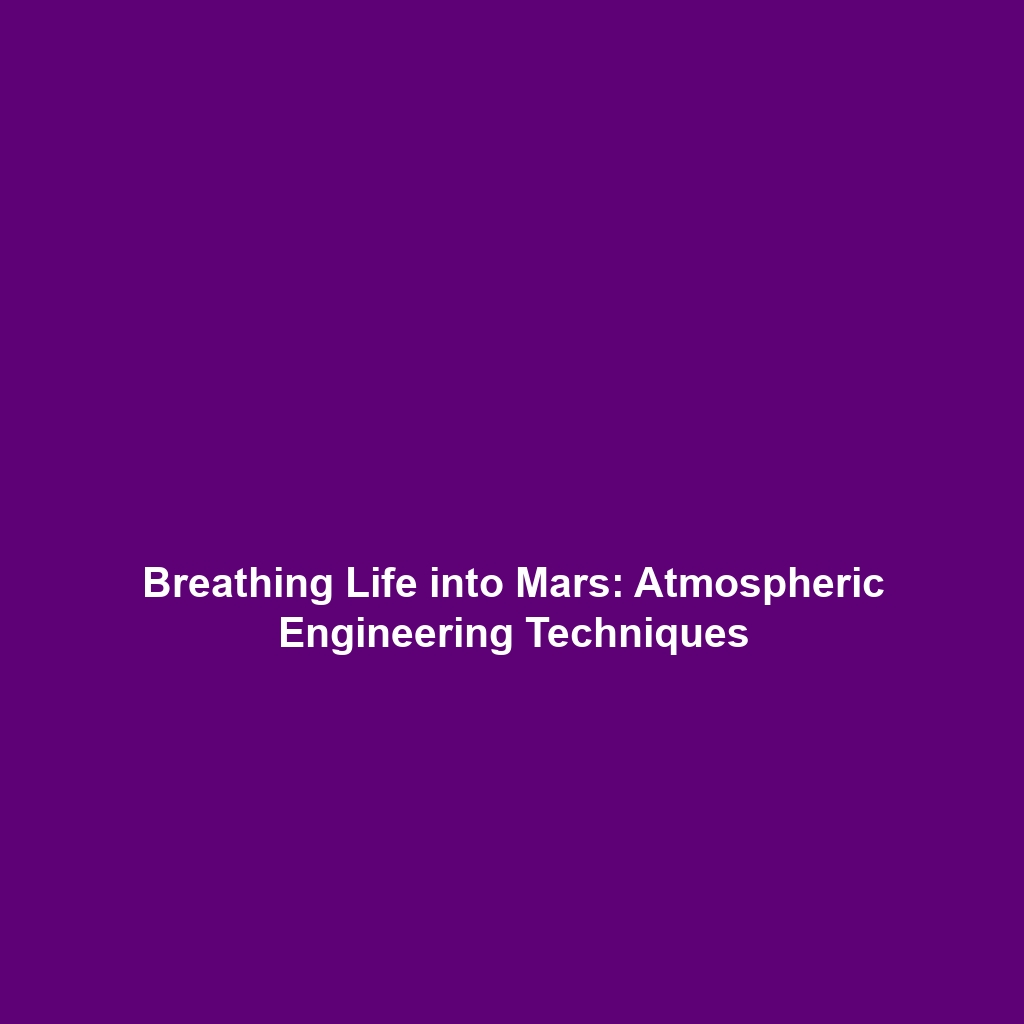Atmospheric Engineering: Techniques to Thicken Mars’ Atmosphere and Create Breathable Air
Introduction
Atmospheric engineering plays a pivotal role in the quest for colonizing Mars. By developing techniques to thicken Mars’ atmosphere and create breathable air, scientists aim to transform the Red Planet into a viable habitat for human life. This field combines advanced technologies and innovative methods to tackle one of the main obstacles to planetary colonization: the harsh, thin atmosphere of Mars. With a focus on terraforming and enhancing air quality, atmospheric engineering is vital for ensuring the long-term survival of extraterrestrial settlers.
Key Concepts
Understanding atmospheric engineering involves several key concepts that interlink with the objectives of colonizing Mars:
1. Terraforming Strategies
The process of terraforming Mars focuses on altering the planet’s environment to resemble Earth’s. This includes:
- Increasing atmospheric pressure
- Enhancing greenhouse gas levels
- Implementing biological processes to produce oxygen
2. Greenhouse Gases
Leveraging greenhouse gases, such as carbon dioxide and methane, is crucial for thickening Mars’ atmosphere to trap heat and create a suitable environment for human habitation.
3. Surface Albedo Modification
Changing the reflectivity of Mars’ surface can significantly affect its temperature and contribute to atmospheric retention.
Applications and Real-World Uses
Understanding how atmospheric engineering is used in colonizing Mars can lead to tangible applications:
1. Use of Atmospheric Generators
Atmospheric generators could create breathable air by using chemical processes to convert carbon dioxide into oxygen.
2. Biological Engineering
Genetically engineered plants might be deployed on Mars to enhance inhalable oxygen production, facilitating the establishment of human colonies.
3. Solar Reflectors
Deploying satellite solar reflectors may increase temperatures, further thickening the atmosphere through accelerated sublimation of polar ice.
Current Challenges
Despite the promise of atmospheric engineering, several challenges complicate its implementation:
- Technical Limitations: Existing technology may not be sufficient to create a sustainable atmosphere.
- Resource Allocation: Funding and resources for large-scale projects are still under debate.
- Time Scale: The process of thickening Mars’ atmosphere could take centuries or longer.
Future Research and Innovations
Future research is likely to focus on groundbreaking innovations that improve our understanding of atmospheric engineering. Areas of interest include:
1. Advanced Simulation Techniques
Simulations may provide insights into potential atmospheric outcomes following various engineering interventions.
2. Exploration of Martian Resources
Utilizing Martian resources, such as ice and mineral deposits, could facilitate local production of gases necessary for a thicker atmosphere.
3. Collaborative International Efforts
Global collaboration in space exploration could accelerate the development of technologies necessary for terraforming.
Conclusion
In summary, atmospheric engineering offers promising techniques to thicken Mars’ atmosphere and create breathable air, crucial for the future of colonizing Mars. As we advance our understanding of what it takes to make Mars habitable, it is essential to support ongoing research and international collaboration. For those interested in the science of colonization and terraforming, further exploration of related topics may provide even deeper insights into the feasibility of human life beyond Earth.
For more information, visit our pages on Research Innovations and Terraforming Techniques.

Leave a Reply